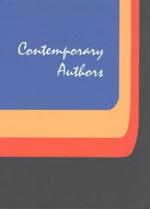|
This section contains 9,516 words (approx. 32 pages at 300 words per page) |

|
SOURCE: Zenchuk, J. B. “Earle Birney's Concrete Poetry.” In Perspectives on Earle Birney, pp. 104-29. Downsview, Ontario, Canada: ECW Press, 1981.
In the following essay, Zenchuk traces the introduction and development of Birney's concrete poetry, which combined text and visual elements in ways that were unconventional at the time Birney began experimenting with them.
I
If Earle Birney admits non-linguistic features into his poetry it is not out of any desire to eliminate the word altogether. Birney was and remains a poet rather than a graphic artist. The page is the medium, but language is both the tool and the material of his art, and his first love, whether he is writing concrete or conventional verse. The difference is that in concrete the medium becomes active by conscious design. Through the use of form, typography, and layout, the page is made to contribute vigorously to the overall poetic effect...
|
This section contains 9,516 words (approx. 32 pages at 300 words per page) |

|


